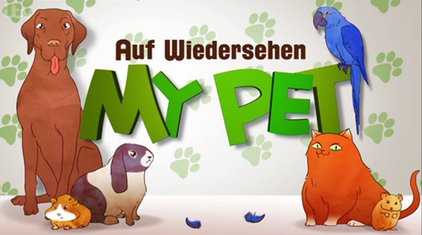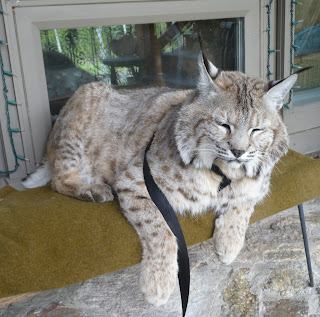Steps in Caring for Your New Ferret
Steps in Caring for Your New Ferret
 Did you know that the English translation for the scientific name for Ferret is “Stinky Thief”. Ferrets have a strong body odor, due to their scent glands that are used to attract mates. They are also known for stealing food and children’s toys.
Did you know that the English translation for the scientific name for Ferret is “Stinky Thief”. Ferrets have a strong body odor, due to their scent glands that are used to attract mates. They are also known for stealing food and children’s toys.
A Ferret does require a well-ventilated home with a solid floor. The habitat should be large enough for a food dish, water bowl and a hiding house. The right sized home will allow for separate areas for eating, sleeping, exercising and eliminations. A multi level home is preferred as they provide additional space for exercising.
Ferrets are social animals and can live in groups or pairs. Remember to allow extra room if you own more than 1 ferret. Ferrets love to play and exercise, they enjoy hard plastic toys as well cloth toys. Tunnels are also a favorite item. Just remember, soft rubber and foam toys must not be given to ferrets.
When outside the habitat, your pet can enjoy exercise in a exercise pen or take him for a walk on a leash.
Ferrets can be very easily litter trained. There are corner litter pans available from pet retailers and these should be placed in a corner away from food and water. There are many different types of litter available. The best for ferrets are pine, aspen or recycled paper, please do not use Cedar shavings. The litter pan and bedding should be spot cleaned daily and completely changed once a week.
Ferret are very inquisitive and outgoing and will bond strongly with their pet parents. Ferrets are sound sleepers, who sleep during the day and may not wake up if picked up and carried around.
Ferrets are carnivores and require a diet high in protein. Pellets should always be placed in their food bowl and not directly on the bedding. All food and water bowls should be cleaned out daily. You can offer you pet Papaya, bananas and melon once a week as a treat.
When you purchase your ferret just remember that it will take 3-4 days for them to get used to their new surroundings and environment. Please try and wait 3-4 days before handling your new friend, all the while you should be monitoring her behavior for any signs of excessive stress or illness. Things to watch for that are signs of excessive stress are bare patches of fur, diarrhea, or/and lethargic behavior.
You have made a great choice in a new pe., most of all enjoy your new member of the family.…

 Buying a new kitten for sale can bring a lot of happiness into your home and they make wonderful pets. They require little grooming, can be easily house trained and are naturally very clean animals. Cats also make great companions but are also independent and can amuse and take care of themselves.
Buying a new kitten for sale can bring a lot of happiness into your home and they make wonderful pets. They require little grooming, can be easily house trained and are naturally very clean animals. Cats also make great companions but are also independent and can amuse and take care of themselves. Want a new kitten for a friend? If you want to have a loving kitten, or if this is your first time caring for new kitten, it’s vital that you simply follow these recommendations on taking care of cats, and of course, utilize them. This article shares basic kitten care information, so read on.
Want a new kitten for a friend? If you want to have a loving kitten, or if this is your first time caring for new kitten, it’s vital that you simply follow these recommendations on taking care of cats, and of course, utilize them. This article shares basic kitten care information, so read on. There’s no denying the fact that the best all natural cat food, especially for a new kitten, is the one Mother Nature so adequately provides. This quality raw meat and bones diet provides balanced nutrition, a happy and healthy mind and goes a long way to satisfy the natural hunting instinct.
There’s no denying the fact that the best all natural cat food, especially for a new kitten, is the one Mother Nature so adequately provides. This quality raw meat and bones diet provides balanced nutrition, a happy and healthy mind and goes a long way to satisfy the natural hunting instinct.
 When it comes down to shoes, everybody has their own preference and style. Naturally, many people like the same shoes and most have the tendency to follow the trends, but there are such a wide variety of different shoes and sandals, showing that nobody’s taste is just the same as the next person’s. Let us take women’s sandals for example.
When it comes down to shoes, everybody has their own preference and style. Naturally, many people like the same shoes and most have the tendency to follow the trends, but there are such a wide variety of different shoes and sandals, showing that nobody’s taste is just the same as the next person’s. Let us take women’s sandals for example. When we first got our now 15 year old tuxedo cat, she was a frail, too-thin kitten. At about 8 weeks old, she was half the size of the other kittens in a feral cat colony we had been watching and supporting. I couldn’t stand by and watch that one die as the others prevented her from eating, and actually beat her up from time to time. So I snatched her one morning, which wasn’t as easy as I thought it would be. She still had some strength and good reflexes. But I knew that wouldn’t last much longer. It was time for an intervention!
When we first got our now 15 year old tuxedo cat, she was a frail, too-thin kitten. At about 8 weeks old, she was half the size of the other kittens in a feral cat colony we had been watching and supporting. I couldn’t stand by and watch that one die as the others prevented her from eating, and actually beat her up from time to time. So I snatched her one morning, which wasn’t as easy as I thought it would be. She still had some strength and good reflexes. But I knew that wouldn’t last much longer. It was time for an intervention!